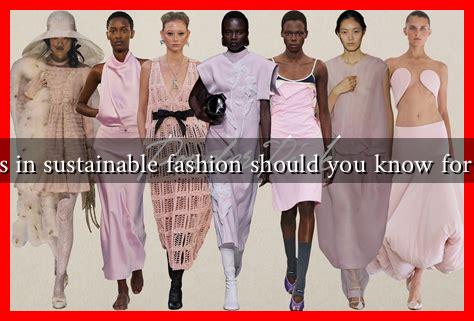-
Table of Contents
Which Trends in Sustainable Fashion Should You Know for Spring 2025
As the fashion industry continues to grapple with its environmental impact, sustainable fashion is emerging as a vital trend for the upcoming Spring 2025 season. With consumers becoming increasingly aware of the ecological footprint of their clothing choices, brands are innovating to meet this demand. This article explores the key trends in sustainable fashion that you should be aware of for Spring 2025, highlighting innovative practices, materials, and consumer behaviors.
1. Circular Fashion: The New Norm
Circular fashion is gaining traction as a sustainable alternative to the traditional linear model of production and consumption. This approach emphasizes the importance of reusing, recycling, and repurposing materials to minimize waste.
- Upcycling: Brands are increasingly focusing on upcycling, where old garments are transformed into new pieces. For instance, the brand Reformation has been a pioneer in this space, creating stylish pieces from surplus fabric.
- Rental Services: The rise of rental services, such as Rent the Runway, allows consumers to wear high-quality garments without the commitment of ownership, thus reducing waste.
According to a report by the Ellen MacArthur Foundation, transitioning to a circular economy could generate $560 billion in economic benefits for the fashion industry by 2030. This trend is not just a passing phase; it is becoming a fundamental aspect of how fashion operates.
2. Biodegradable and Regenerative Materials
As consumers become more eco-conscious, the demand for biodegradable and regenerative materials is on the rise. These materials not only reduce environmental impact but also contribute positively to the ecosystem.
- Organic Cotton: Unlike conventional cotton, organic cotton is grown without harmful pesticides and fertilizers, making it a more sustainable choice.
- Regenerative Agriculture: Brands like Patagonia are investing in regenerative agriculture practices that restore soil health and biodiversity.
- Innovative Fabrics: Companies are developing fabrics from unexpected sources, such as pineapple leaves (Piñatex) and mushroom mycelium (Mylo), which are both biodegradable and sustainable.
These materials not only appeal to environmentally conscious consumers but also offer unique textures and aesthetics that can set brands apart in a crowded market.
3. Transparency and Ethical Production
In an age where consumers demand accountability, transparency in the supply chain is becoming a critical trend. Brands are increasingly sharing information about their sourcing, production processes, and labor practices.
- Traceability: Technologies like blockchain are being used to track the journey of garments from raw materials to retail, ensuring ethical practices are upheld.
- Fair Trade Practices: Brands that adhere to fair trade principles, such as Eileen Fisher, are gaining consumer trust and loyalty.
According to a survey by McKinsey, 66% of consumers are willing to pay more for sustainable brands, highlighting the importance of transparency in building brand loyalty.
4. Minimalism and Timeless Design
As fast fashion continues to face criticism, the trend towards minimalism and timeless design is gaining momentum. Consumers are increasingly seeking quality over quantity, opting for versatile pieces that can be worn across seasons.
- Capsule Wardrobes: The concept of a capsule wardrobe, which consists of a limited number of essential pieces, is becoming popular among consumers looking to simplify their closets.
- Timeless Styles: Brands are focusing on creating classic designs that transcend trends, encouraging consumers to invest in pieces that will last.
This shift not only promotes sustainability but also encourages a more thoughtful approach to fashion consumption.
Conclusion: Embracing a Sustainable Future
As we look forward to Spring 2025, the trends in sustainable fashion reflect a significant shift in consumer behavior and industry practices. From circular fashion and innovative materials to transparency and minimalism, these trends are shaping a more sustainable future for the fashion industry. By embracing these changes, consumers can make informed choices that not only benefit their wardrobes but also contribute positively to the planet.
In summary, staying informed about these trends will not only enhance your fashion sense but also align your choices with a more sustainable and ethical approach to clothing. As the industry evolves, so too should our understanding and appreciation of the impact our fashion choices have on the world.


